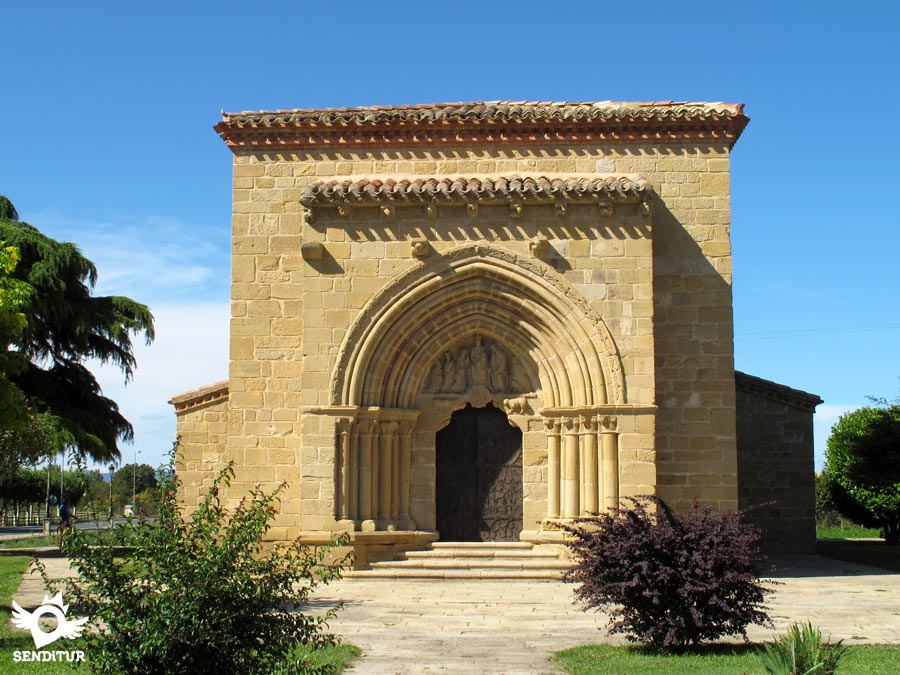It is located in the centre of a wide plain, occupying part of the alluvial plain of the river Oja, on its right bank. According to historical documents, back in the 11th century, Bañares was already mentioned when King Sancho el de Peñalén donated the Monastery of Santa María de Bañares to the monastery of San Millán. Some fifty years later it was Alfonso El Batallador who handed over his possessions and the hamlet of Bañares to Santo Domingo de la Calzada. Writings say that in lands near Bañares the battle took place that in 1157 the king of Navarre Sancho el Sabio and the king of Castile Sancho IV fought. Enrique de Trastamara and his army also met here to prepare the battle, which he presented in Nájera against his brother Pedro I el Cruel.

The lords of Vizcaya and the governors of Nájera lived in Bañares until Alfonso XI gave the title of city to Santo Domingo de la Calzada in the 14th century. The locality belonged to the dominion of the Count of Bañares, Pedro de Zúñiga, from 1478, year in which he was granted the title of Count, who was also owner of the Castle of which some ruins remain today, until the abolition of this jurisdictional system in 1811. It was also part of the Junta de Valpierre, which used to meet twice a year and had full power to judge and punish the lawsuits and crimes that occurred in the municipalities that composed it. It was integrated in the Province of Burgos until the creation of the Province of Logroño.
In Bañares the monumental parish church of La Santa Cruz stands out, it is Gothic, it began to be built around 1490 and its construction lasted about twenty years. Inside is one of the jewels of Romanesque architecture in Spain, the ark of San Formerio, which seems to date from the middle of the 12th century. Opposite the church is the hermitage of Santa María de la Antigua, from the late twelfth century, was the old Parish Church of Santa Cruz, and was renamed de la Antigua to build the new church with the same name.

In 1975, the hermitage it was moved and restored, stone by stone, from the head of the present parish, which was where it was located. Of this hermitage, the south façade corresponds to the Romanesque façade of the previous one, inside there are two Romanesque arches belonging to the disappeared Monastery of Santa María de Zaldo. The castle of Bañares, located at the exit of the village, is totally in ruins. The Way of the Interior, the Basque-French Way or the Way of the San Adrián Tunnel pass through Bañares.
The patron saint fiestas in honour of San Formerio are held on the third weekend in August. However, 25 September is the day of the patron saint with a mass, procession and lunch. Each day of the festivities there is a procession, in which the young people dance the patron saint through different streets of the village. On the last Sunday of July the Day in Honor of the Virgin of Antigua is celebrated.

A custom of this place was to go to Ask for the Rebollo. When a couple of newlyweds came home after the honeymoon, their gang of friends would go to their door at night to serenade them. When they got them to open the door of the house they all celebrated together and enjoyed until the early hours of the morning with the food and liquors that the bride and groom had brought.
On the first Saturday of July, since the year 2000, the Festival del Choricillo a la Sidra (Choricillus with Cider) is celebrated. Many people come to this event to taste the magnificent choricillus cooked on the ground floor of the Town Hall.
MORE ROUTES AVAILABLE, DON'T MISS IT...
MORE PLACES AVAILABLE, DON'T MISS IT...
Bañares is communicated with Santo Domingo de la Calzada and Haro through the LR-203 that crosses the locality, also we can arrive until Bañares following the LR-309 that from the LR-111 in the surroundings of Castañares de Rioja passes by Bañares to join with the N-120 and the Autovía del Camino in Hervías.
There is a regional bus service covering the Haro-Ezcaray line Monday through Friday. There is another regular bus service that covers the Logroño-Burgos line by towns. The stops of both transports are in the street Hermanos de Cura and Lope.
SENDITUR is not responsible for any variation in the information described, as well as for the misuse of its guides and recommends that everyone be responsible and prudent in carrying out the activity. Likewise, we invite you to document yourself with books and specialized guides to complement the information described. From the commitment of SENDITUR with Nature and the respect to the balance of the environment, SENDITUR urges you to travel in a responsible way, with low environmental impact and respecting at all times the Natural, Cultural and Social environment wherever you go. For any suggestion, SENDITUR invites you to send an email to .
Continue watching …